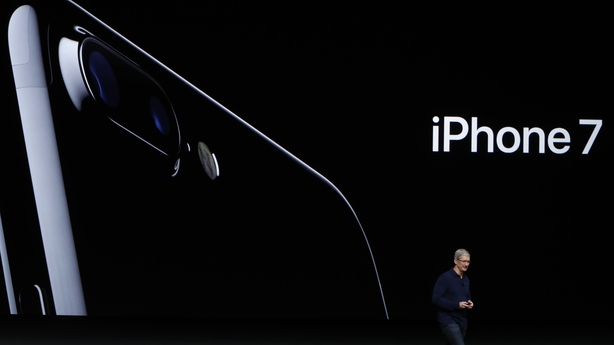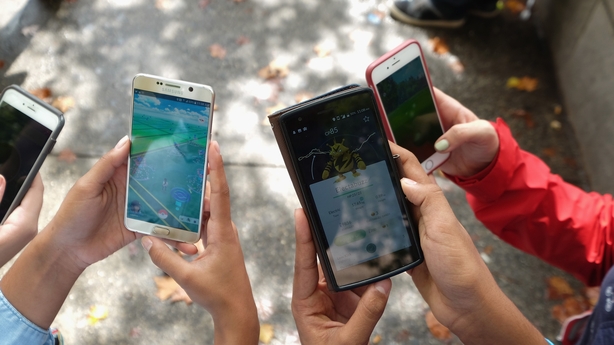What an exciting year 2016 was on the technology front, with stories of self-driving vehicles, exploding smartphones, fake news, and lots more grabbing our attention.
Here, in no particular order, are ten of the biggest.
'Fakebook' news
The election of Donald Trump to the office of President in the US was a massive news story in itself.
But as the dust settled following his victory, many questions began to arise about the role of fake news in the campaign, particularly stories shared on the social network Facebook (a claim which it initially rejected).
Extraordinary tales of Macedonian students earning large sums of advertising revenue from websites they had built and populated with fake stories began to emerge.
The issue became so significant that the phrase “post-truth” was named word of the year by the Oxford English Dictionary.
It’s an issue that Facebook and others are going to have to do a lot more to tackle in 2017 if they want to retain their credibility as platforms for real news, and to be fair Facebook has announced measures and tools to do so.
Ironically though the controversy may all play into the hands of so-called traditional media (the people who actually check facts before publishing or broadcasting), the very organisations whose revenue streams are currently being devoured by online news outlets.
Exploding phablets

It was supposed to arrive on the market with a bang. The new Samsung Galaxy Note 7 was billed as the best phablet or big smartphone ever, and the initial reviews were hugely positive.
But the publicity bang around its arrival was quickly overtaken by a bang of a different kind, as reports began flooding in from around the world of Note 7s exploding and spontaneously combusting.
A battery problem was identified that Samsung claimed was limited, and the offending devices were recalled.
But the problem persisted across devices that hadn’t been recalled, with the inevitable outcome of a full recall of all the devices, and the scrapping of the product completely.
The debacle will cost Samsung billions of euro in the long-term, the reputational damage incalculable.
Tesla’s auto-pilot
Self-driving car technology made great strides in 2016 on many fronts. Uber deployed some test autonomous taxis to the streets of Pittsburgh, its autonomous truck division Otto made a delivery of beer in a self-driving truck, and lots of other developments took place.
Tesla, Elon Musk’s electric car company, pushed out its auto-pilot software update to its vehicles, enabling the cars to hold their position on the road by themselves under certain conditions.
But the most serious risk faced by Tesla and other self-driving car manufacturers was also laid bare, as reports emerged of the first fatal crashes involving cars using the technology.
Autonomous vehicles will, when perfected, make driving much safer. But there is much work still to be done before we get there.
Twitter’s woes deepen
Despite its many merits, Twitter has in recent years struggled to grow its user base and generate a sustainable revenue stream. 2016 saw the difficulties continue.
Following workforce cuts in 2015, in October the company announced it was letting a further 9% of its employees go.
News also emerged that a number of larger tech companies, including Google’s parent Alphabet, Salesforce and Disney, were eyeing it up for an acquisition, although in the end they all walked away.
The company also shut down its Vine short video platform. Twitter co-founder and CEO Jack Dorsey, who returned to the microblogging platform last year, is under growing pressure to turn things around.
2017 could be a make or break year, although increasingly successful relationships with US sports leagues and news organisations provide some hope.
What’s a headphone jack?

When the history of smartphones is written, 2016 will go down as the year the headphone jack was killed off. While it wasn’t the first to ditch the convenient and familiar audio source, Apple’s decision to jack in the jack on the iPhone 7 made headlines around the globe.
Others look set to follow suit, including Samsung which is reportedly planning to drop it from the Galaxy S8 when it is launched in March.
The future, we are told, is wireless. Now, where did I drop that AirPod?
Hacked off
2016 could well be dubbed The Year of the Hacker. Once again, online fraudsters, thieves, vandals and terrorists made their digital voices heard.
In February, hackers dumped records of nearly 30,000 employees of the US Department of Homeland Security and the FBI online.
The IRS in the US also admitted information of over 700,000 individuals had also been breached. In May, 117 million emails and passwords of LinkedIn users, gathered during a 2012 breach, were leaked. $81 million was stolen from a Bangladeshi bank in a cyberheist.
Yahoo revealed it had been the subject of two earlier massive state sponsored breaches, during which the data of 500m and 1bn users respectively was compromised. Tumblr, Myspace and many many others also hit the headlines for similar reasons.
Particularly sinister though was the Mirai botnet – a virus which infects insecure Internet of Things devices like CCTV cameras and routers, and then uses them in a network or botnet to mount massive cyber attacks.
Virtual reality becomes a reality
After a long childhood and adolescence, virtual and augmented reality technology finally came of age in 2016. Sony’ Playstation VR, the Oculus Rift, HTC’s Vive, Microsoft’s Hololens and Samsung’s Gear VR all hit the shelves, heralding in a new era in gaming, entertainment, training and more.
The signs so far are that interest in the technology has been slow and cautious. That’s probably not surprising, given the costs involved and the fact it is all so new.
Pokemon Go-es wild

Although one could lump this story in under augmented reality, in truth that wouldn’t do the Pokemon Go phenomenon justice.
In March the smartphone based game, in which players must navigate around the real world to find and then capture virtual Pokemon characters in augmented reality, was released in Japan.
It quickly swept the world, prompting all sorts of stories of strange and bizarre behaviour among its players, and raking in the cash for its creators, the Google owned Niantic Labs and Nintendo.
The game and concept continues to be incredibly popular, so expect to see similar ideas and spin-offs emerge in 2017.
Apple’s rumble with the feds and the EU
It was an interesting year for Apple on many levels. The company continued to rake in massive profits, and pushed out some new product iterations.
But its clash with the FBI, which wanted the tech giant to break into a locked iPhone so it could examine its contents for clues about a terror attack, also garnered much attention.
Unsurprisingly, Apple pushed back citing privacy concerns and saying it would set a dangerous precedent. In the end the case was dropped after the FBI got back door access using third party software.
But it’s unlikely to be the end of the story. Later in the year Apple was in the spotlight again, after the European Commission ruled Ireland had granted the company €13bn in undue tax benefits, which had to be repaid. That story is also likely to run and run, as Apple and the Irish appeal the decision.
Snapchat
When it comes to social networks, 2016 belongs to Snapchat. Because over the past twelve months the messaging platform, which in its early days garnered a bad name because its disappearing message feature was being used for all sorts of shenanigans, went mainstream.
While it continues to leave most people over the age of 40 baffled, it has become the default method of communication for people under the age of 20, with its fun augmented reality masks, filters and disappearing messages.
The app continues to get new features, and the parent company Snap is slowly moving into hardware, with an IPO possible next year.
If it does raise up to $40bn, as Bloomberg predicts, you can expect that this time next year we’ll be talking about it again.
Comments welcome via Twitter to @willgoodbody







